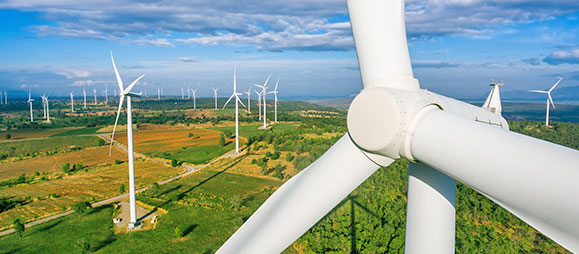The global Wind Turbine Operations and Maintenance Market is projected to grow from estimated USD 39.61 billion in 2025 to USD 59.67 billion by 2030, at a CAGR of 8.5% during the forecast period. The major factors driving the Wind Turbine Operations and Maintenance Market include the increased need for energy efficiency and the global trends toward carbon neutrality and sustainability. There is a significant increase in the number of wind energy installations around the world. As installations rise, there is a corresponding increase in demand for effective O&M services to ensure the performance and longevity of wind turbines. O&M practice is changing quickly due to the development of new technology such as predictive maintenance, remote monitoring, and artificial intelligence. Technologies allow owners/operators to have a proactive approach to detecting issues and minimizing downtime. The support for renewable energy projects from government incentives and policy is also a driver of the market. From an environmental perspective, there is a shift towards sustainability. This drives the O&M market as many operators are adopting more sustainable practices for maintenance and retaining or refurbishing used components rather than eliminating them altogether.
Download PDF Brochure: https://www.marketsandmarkets.com/pdfdownloadNew.asp?id=6726436 The offshore segment of the wind turbine operations and maintenance (O&M) market is clearly changing due to the growth of offshore wind installations and the use of newer technologies. The offshore O&M sector is integrating predictive maintenance strategies, often integrated through AI and IoT deployment to provide real-time monitoring and detection of potential faults and current and/or anticipated failures to limit downtime as well as maintenance costs. The deployment of autonomous systems, like drones and remotely operated vehicles (ROVs), is increasing inspection and maintenance efficiencies. With these technological advancements, the offshore sector is starting to see a realized focus on sustainability, as companies and organizations begin to adapt and implement environmentally friendly maintenance strategies and equipment to minimize their overall environmental footprint. The unscheduled maintenance of wind turbines is becoming more salient due to the complexity and size of wind energy projects. Unscheduled maintenance is defined as reactive maintenance because it is the result of unplanned equipment failure or breakdown. Unscheduled maintenance can also incur large amounts of downtime due to unplanned failures. Some of the factors creating the need for unscheduled maintenance are age of turbine fleet, harsh environmental conditions, and larger wind turbine sizes. To reduce unscheduled maintenance, the O&M market is increasingly using predictive analytics, remote monitoring, and drone inspections to identify faults before they happen. Along with the introduction of innovation in equipment, the wind turbine O&M market is looking to build supply chain continuity and reliability, as well as workforce training and preparedness. Predictive analytics, digital twins, and better monitoring are reducing surprise failures or unscheduled maintenance. There is a push towards proactive maintenance strategies to improve turbine uptime and reduce emergency interventions. The North America wind turbine operations and maintenance market size is projected to reach USD 10.45 billion by 2030, at a CAGR of 6.7% between 2025 and 2030. In the US, wind energy generation capacity grew to a total installed capacity of approximately 152 gigawatts (GW) in 2023, which is an increase of about 46% from 2019. Wind energy accounted for about 12% of the electricity provided in the country in 2023. The leading wind generation state in 2023 was Texas, with Iowa, Oklahoma, Kansas, and Illinois also leading in wind generation. Each of these leading states has wind resources that provide benefits for highly productive wind projects, along with infrastructure that allows wind generation projects to be constructed. Increased wind generation can also be attributed to improvements in technology that allow for greater turbine capacity and lower energy costs. Wind power has become one of the cheapest forms of power generation in the US. Request Sample Pages: https://www.marketsandmarkets.com/requestsampleNew.asp?id=6726436 The global Wind Turbine Operations and Maintenance Market is dominated by major players that have a wide regional presence. Some of the key players in the Wind Turbine Operations and Maintenance Industry are Siemens Gamesa Renewable Energy, S.A.U. (Spain), Vestas (Denmark), GE Vernova (US), Nordex SE (Germany), Suzlon Energy Limited (India), Envision Group (China), SANY Renewable Energy Co., Ltd. (China), and Goldwind (China). Siemens Gamesa Renewable Energy, S.A.U. Siemens Gamesa Renewable Energy, S.A.U., a subsidiary of Siemens Energy AG, designs, manufactures, and sells both onshore and offshore wind turbines. The company also offers monitoring and maintenance of wind farms. Its services include diagnostic, energy thrust, multi-brand services, and offshore logistics services. The company operates under two segments: Wind Turbines and Service. It offers operation and maintenance services through its Service segment. The company uses digital tools to predict, detect, and fix problems remotely. Siemens Gamesa Renewable Energy, S.A.U. has installed over 130 GW of installed wind power capacity in the world, including over 130 installed capacity of onshore wind turbines, and it is one of the leaders in offshore wind with over 8 GW installed capacity. GE Vernova GE Vernova is a global leader in the electric power sector, with products and services that create, transfer, orchestrate, convert, and store electricity. The company’s goal is to design, manufacture, deliver, and service technologies to support a more reliable, secure, and sustainable electric power system, while permitting electrification and ultimately decarbonization. It has three business segments, namely, Power, Wind, and Electrification. The Wind segment provides operations and maintenance services. GE Vernova’s Onshore Wind division provides reliable and proven wind turbines: 2.8-127m, 3.6-154m, and 6.1-158m. To date, GE Vernova has created and installed approximately 57,000 wind turbines, totaling more than 120 GW of installed capacity, globally, in both onshore and offshore applications. The company has a geographical presence in the US, Europe, the Americas, Asia, and the Middle East & Africa.
